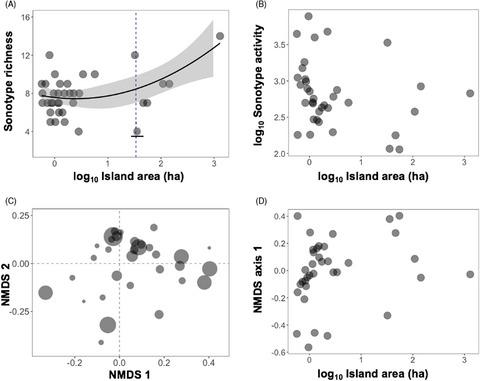当前位置:
X-MOL 学术
›
Remote Sens. Ecol. Conserv.
›
论文详情
Our official English website, www.x-mol.net, welcomes your
feedback! (Note: you will need to create a separate account there.)
Passive acoustic monitoring reveals the role of habitat affinity in sensitivity of sub-tropical East Asian bats to fragmentation
Remote Sensing in Ecology and Conservation ( IF 3.9 ) Pub Date : 2021-09-05 , DOI: 10.1002/rse2.237 David López‐Bosch 1 , Ricardo Rocha 2, 3 , Adrià López‐Baucells 1 , Yanping Wang 4 , Xingfeng Si 5 , Ping Ding 6 , Luke Gibson 7 , Ana Filipa Palmeirim 2, 7
Remote Sensing in Ecology and Conservation ( IF 3.9 ) Pub Date : 2021-09-05 , DOI: 10.1002/rse2.237 David López‐Bosch 1 , Ricardo Rocha 2, 3 , Adrià López‐Baucells 1 , Yanping Wang 4 , Xingfeng Si 5 , Ping Ding 6 , Luke Gibson 7 , Ana Filipa Palmeirim 2, 7
Affiliation

|
Hydropower infrastructure represents a major driver of habitat loss and insular fragmentation worldwide, mostly across the tropics and sub-tropics. Despite growing evidence of dam-induced impacts on biodiversity, the effects of insular habitat fragmentation on species assemblages remain poorly understood, particularly for East Asian vertebrates. Here, we assess how insectivorous bats respond to forest fragmentation in Thousand Island Lake, a mega-hydroelectric dam in East China. Bat assemblages were surveyed across 36 land-bridge islands of different sizes and degrees of isolation, using AudioMoth recorders. Echolocation calls were classified into sonotypes, each corresponding to either single or multiple species, which were further classified according to their habitat affinities into forest or open-space foragers. Based on 22 875 five-min recordings from 108 detector-nights, we recorded 15 bat sonotypes, eight of which we classified as forest sonotypes (2329 bat passes) and seven as open-space sonotypes (52 277 bat passes). Overall, sonotype richness increased with island area, but only above a certain threshold (34 ha). Habitat affinity played an important role in ensemble-level responses to fragmentation; forest sonotype richness increased with island area, whereas open-space sonotype activity was higher in more isolated islands. Our results highlight the relevance of particularly large fragments (>1000 ha) to maintain area-sensitive forest bat species. However, islands below 34 ha in size and those more isolated from the mainland are also of conservation value as they, correspondingly, harbour a variable (but substantial) number of species and concentrate higher activity of open-space foragers. These findings further demonstrate that acoustic sampling methods, as the one presented here, are able to provide key information for evidence-based policies aimed at halting the ongoing wave of dam-induced biodiversity loss.
更新日期:2021-09-05











































 京公网安备 11010802027423号
京公网安备 11010802027423号